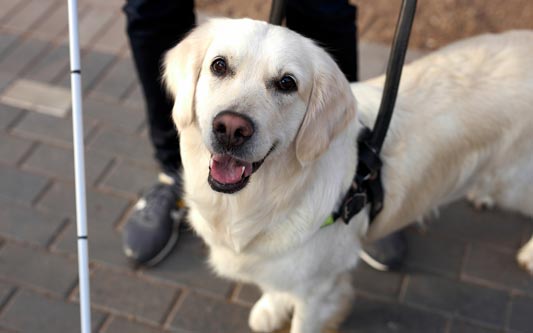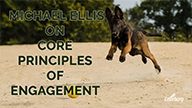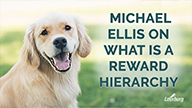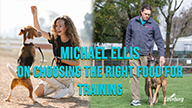A Primer on Guide Dog Etiquette
Ed's Note: Daniel Jacob is a writer and guide dog expert who lives in Montreal, Canada. He often writes from his perspective of being a blind man navigating the world with his guide dog.

Never could I have imagined that, on a warm September night, a person would want to assault me for not being allowed to pet my dog while it was harnessed. Never do I feel so violated as when someone asks if they may pet the dog and, when I say no, they do it anyway, thinking I won't know because I can't see. Though these incidents happen, the overwhelming number of people my dog and I encounter are polite and genuinely interested in guide dogs and their jobs.
To help keep you from becoming part of the minority of rude people, here is a primer on guide-dog etiquette.
A guide dog can be anything from a lab cross to a German Shepherd, ranging from about 45 pounds to 80 or even 90 pounds, depending on the size, strength, and weight of the user. A guide dog always wears a harness with a handle, so that the blind person becomes more attuned to its movements. We can feel things like when the dog is stepping up or down off something, and we can even feel when there is tension in the dog's neck and shoulders, which likely indicates an obstacle or the landmark we asked for. We feel all this through the harness. Many harnesses sport a sign asking the public not to touch.
There are four main reasons the public is asked not to have any contact with the dog.
- The harness tells the dog that it is working.
- Interference might break the trust between the dog and the handler because the handler finds it difficult to discern whether the dog is trying to help navigate around obstacles, or is trying to go toward a stranger who wants to interact with it.
- The public has no way to discern between an easily distracted rookie dog (one to two years on the job) and a veteran dog that can more easily evade a distraction and get back to work.
- Constant and repeated distractions result in the dog being desensitized to people standing motionless along with various parts of the route. It is very possible that a dog may lead a blind user into a person standing motionless as a way to gain attention from that person.
Likewise, there are 3 important reasons for which blind users should NOT let their guide dogs be pet while in harness.
- Not all dogs handle distraction equally. Some are better than others at staying calm while people are petting or talking to them. It goes back to what I was saying about rookie dogs.
- You're blind. You can't see who's watching from a distance and what assumptions they're making about you and/or your dog. Person C watching person B petting person A's guide dog might assume that it's okay to go around petting guide dogs. They won't know that person B asked for permission. This gives mixed messages that can disrupt a guide dog's training.
- Harnesses are a symbol of work for the dog. If dogs with harnesses are continuously being pet, how will owners of public establishments or drivers of public transport supposed to know the difference between pets and working animals? This blurring of the lines is the main reason that guide dog schools are forced to give us ID cards that prove that a dog is trained and certified for the job that it does. We must establish boundaries so that the harness remains a symbol of work that should not be disrupted.
A guide dog's four main tasks are:
- To stop at curbs or steps.
- To navigate around obstacles.
- To find landmarks such as doors or seats.
- To walk in a straight line (especially important to a person born blind).
Despite its training, a guide dog is still just a dog. It is not a GPS locating system, nor does it read street signs. To top it off, dogs are red-green color blind as well as being myopic. (That is to say that dogs and most carnivorous mammals, in fact, have trouble focusing on objects which don't move unless they are within 15 to 25 feet of them.) So a sighted person might be asked for assistance at a street corner, if a blind person cannot judge the light by the sound of the traffic. A guide dog sitting quietly on public transport or lying under a table is actually not at rest; they are in work submission or, waiting for their next command from their blind user.
For many years now, trainers, vets, and other scientists have come up with terms to help separate our psychology from that of our animals: Barking is a symptom of frustration, chewing or licking a form of separation anxiety, jealousy over a toy, food or affection is dominance anxiety. Affection is grooming and grooming is only done by submissive dogs. This means that, when you are talking to a working dog, you are distracting it, but when you are touching it, you are giving it status dominance it has not merited.
If you ask to pet the dog and we're not in a rush or the dog is a veteran, we just might feel inclined enough to take off the harness to avoid confusing the dog. This way, for a time anyway, we can both bask in the warmth of the fur.







Ask Cindy.